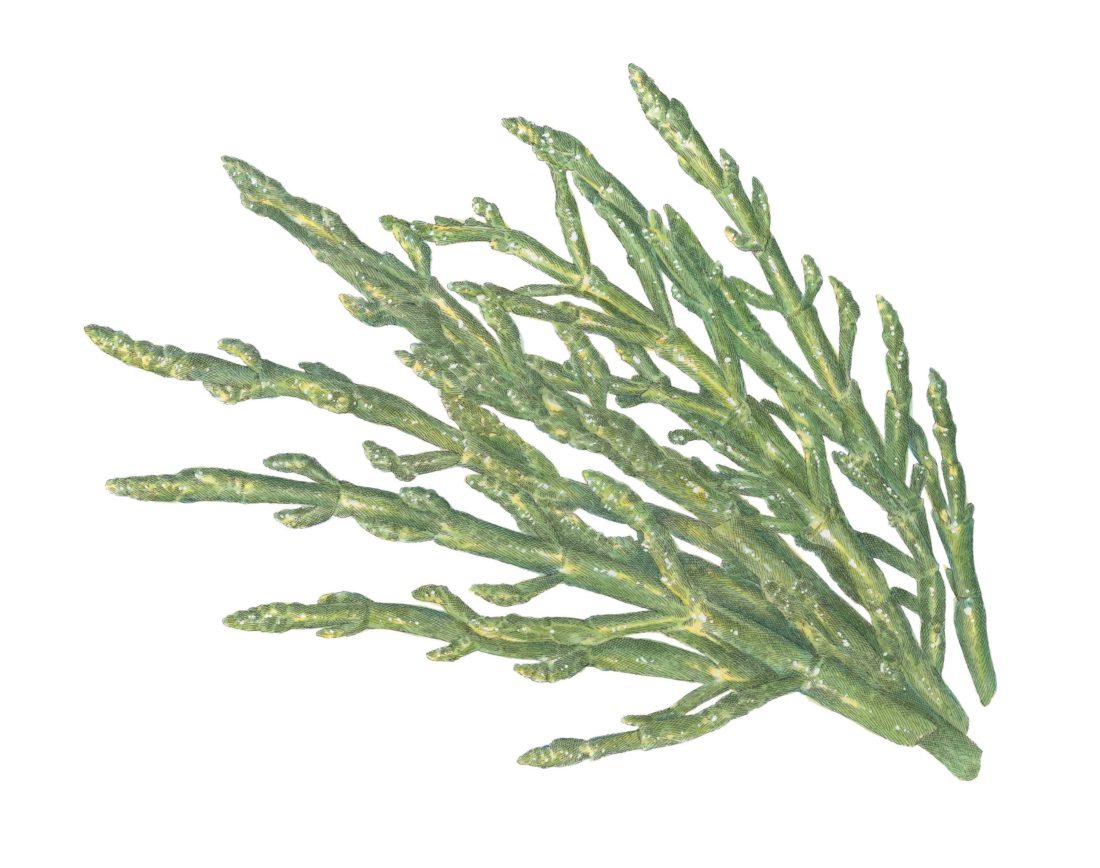Jeremiah Langhorne was foraging near the beaches in Charleston, South Carolina, when he discovered his first patch of sea beans, an edible succulent that grows wild in the coastal salt marsh throughout the South and beyond. “The pride of bringing back a bag of something that delicious is wonderful,” says Langhorne, now the co-owner and chef at the Dabney in Washington, D.C. “When I found out how versatile sea beans are and the possibilities they present, I was hooked.” The seaside herb reaches peak flavor in the summer and goes by a myriad of monikers including Salicornia, sea asparagus, pickleweed, samphire, and glasswort (because ash from the plant was used to make glass in the sixteenth century). “Some people compare the stalks to asparagus tips or green beans, and the texture is similar, but the salinity and intensity are unmatched,” Langhorne says. “The explosiveness of flavor sets them apart.”
To find a bunch yourself, search the edges of tidal areas, and once you’ve properly identified the plant, break off a piece and try it. If it’s woody or tough, often the case if the plants have a reddish tint, move to a different patch. “They should be vibrant and full of life, plump, and brightly colored,” the chef says. If foraging isn’t your thing, sea beans are increasingly found at coastal farmers’ markets (you can also order from Heron Farms, an indoor saltwater farm in Charleston, at heronfarms.com). At home, they’ll keep for up to five days in the refrigerator in a plastic bag with a moist towel around the stems. Their saltiness pairs especially well with seafood, but sea beans can also be simply blanched for salads, sautéed into stir-fries, or chopped and folded into potato salad. Langhorne likes to work them into a chimichurri or salsa verde (see recipe) for the perfect summer topper to just about any seafood or meat. “There’s nothing else like them,” he says. “It’s like biting an ocean breeze.”
THE CHEF RECOMMENDS:
Sea Bean Salsa Verde
Yield: 8–10 servings
INGREDIENTS
2 medium shallots, minced
6 cloves garlic, minced
1 cup sea beans, minced
1 bunch cilantro, finely chopped
1 bunch parsley, finely chopped
4 sprigs tarragon, finely chopped
1 cup extra-virgin olive oil
1 tsp. dried Aleppo pepper
1 lemon, zested
3 tbsp. chardonnay vinegar
1 tbsp. sorghum or honey
Salt
PREPARATION
Add shallots, garlic, and sea beans to a medium-sized mixing bowl. Stir in herbs. Pour olive oil over the mixture, then stir to combine. Add remaining ingredients (except salt) and whisk together. Let rest for a few hours to allow flavors to come together. Season with salt to taste.
Tip: Langhorne particularly likes to spoon the salsa verde over seared scallops. “Scallops are so sweet they naturally call out for something with some saltiness and brightness—it’s a no-brainer to me.”
This article appears in the August/September 2020 issue of Garden & Gun. Start your subscription here or give a gift subscription here.








